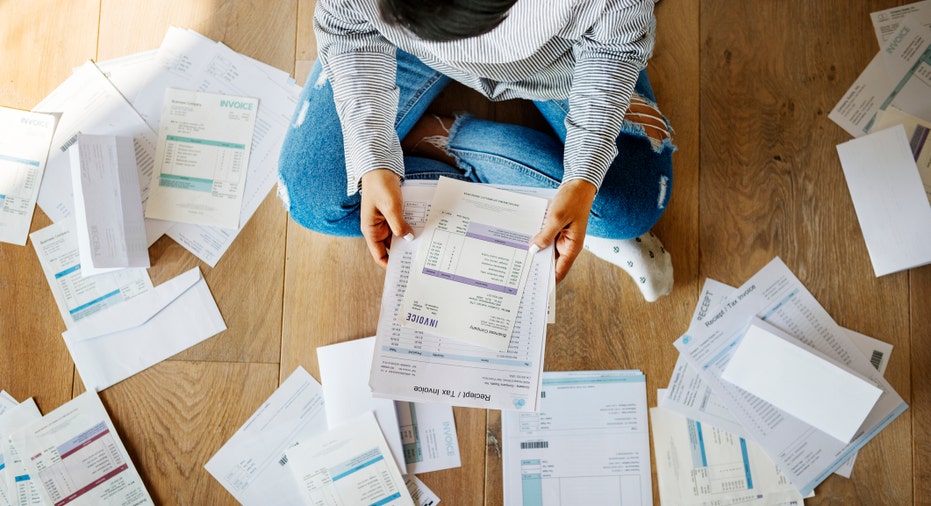Here’s how much debt the average American has — and how to pay it off

Credit card debt is down, but total debt continues to rise. (iStock)
Debt is one of the biggest roadblocks to financial stability for many Americans, and the coronavirus pandemic has made it challenging to pay down balances. While certain aspects of the average household debt improved in 2020, total debt remains on the rise.
How much debt does the average American have?
Experian, one of the three national credit bureaus, has shown in its recent State of Credit report how the credit and debt landscape changed in 2020, the year of the coronavirus pandemic.
Here are some of the findings from the data:
- Credit card balances are down roughly 11%, but retail credit card debt is up a little more than 5%.
- Total non-mortgage debt, which includes credit cards, personal loans, auto loans, and student loans, has increased by just 0.4%.
- Mortgage debt has increased by 1%.
It’s also important to note that the average VantageScore credit score increased from 682 to 688. Consumers are using fewer credit and retail cards and delinquency rates are down, despite the pandemic putting a squeeze on consumer wallets.
HOW TO PAY OFF CREDIT CARD DEBT DURING COVID
How to pay off your debt
There are many ways to approach debt, and your strategy can vary depending on the type of debt you have. With credit card debt, for instance, the high interest rates might cause you to focus on paying them off as quickly as possible.
In contrast, if you have a low interest rate on your mortgage loan, it may be worth it to focus on other financial goals that can give you a better return.
That said, here are three ways to help you pay down your debts faster:
- Refinance
- Consolidate debt
- Accelerate your payments
1. Refinance
You can refinance just about any kind of debt. If your credit score has improved since you first took out the loan or interest rates have fallen in general, you may be able to refinance debt into a new loan and score better terms. With a lower interest rate, you’ll save money as you pay down your debt.
Visit Credible to view your loan options across multiple mortgage refinance lenders with fewer forms to fill out.
HOW TO REFINANCE A PERSONAL LOAN
2. Consolidate debt
The process of consolidating debt is similar to refinancing — you replace one or more debts with a new one. With credit card debt, you may consider debt consolidation with a personal loan or a balance transfer credit card that has an introductory 0% APR promotion. Consolidating could simplify your debt situation and help you save money.
You can visit Credible's online marketplace to compare multiple 0% credit cards at once to help you determine if a balance transfer or personal loan would be the best way to tackle your debt.
5 DIFFERENT TYPES OF PERSONAL LOANS YOU SHOULD CONSIDER
3. Accelerate your payments
If you have multiple credit accounts, the debt snowball method or debt avalanche method can help.
With the debt snowball method, you’ll pay just the minimum on all of your accounts except for the one with the lowest balance. Apply extra payments to that account until it’s paid in full, then take what you were paying on the cleared account and apply it to the next-lowest balance in addition to its regular payment. Continue this process until all your debts are paid in full.
The debt avalanche method works similarly, but instead of prioritizing low balances, it focuses on the accounts with the highest interest rates.
If you’re considering refinancing, visit a marketplace like Credible to view and compare student loan refinance rates and mortgage refinance rates.
And if you’re thinking about debt consolidation with a personal loan or credit card, you can determine the best fit for you by exploring personal loan interest rates and balance transfer credit cards.
There’s no best way for everyone to pay off debt, so do your research to find the best approach for you. The important thing is that you look for opportunities to be proactive about becoming debt-free.
3 WAYS TO START BUILDING YOUR WEALTH EVEN WITH DEBT
Does having debt affect your credit score?
Your credit score is a key indicator of your credit health and overall financial wellness. The FICO credit score, which is most widely used by lenders, is influenced by five factors. The list includes payment history, amounts owed, length of credit history, credit mix, and new credit.
Your payment history is the most important factor in determining your credit score, and if you have so much debt that you start to miss payments, it could damage your FICO score significantly. Your credit utilization rate, which is the percentage of your available credit on all revolving accounts (including credit cards), is also a key element.
The lower your utilization rate, the better, which is why it’s good news that the average rate dropped from 30% to 26%, according to Experian.
Other debt balances don’t have as much impact on your credit score as your credit cards, but having high balances on personal loans, student loans, and other debts can still affect your score.
Keeping track of your credit score is key to building a good credit history. Visit Credible to learn more about credit monitoring.




















